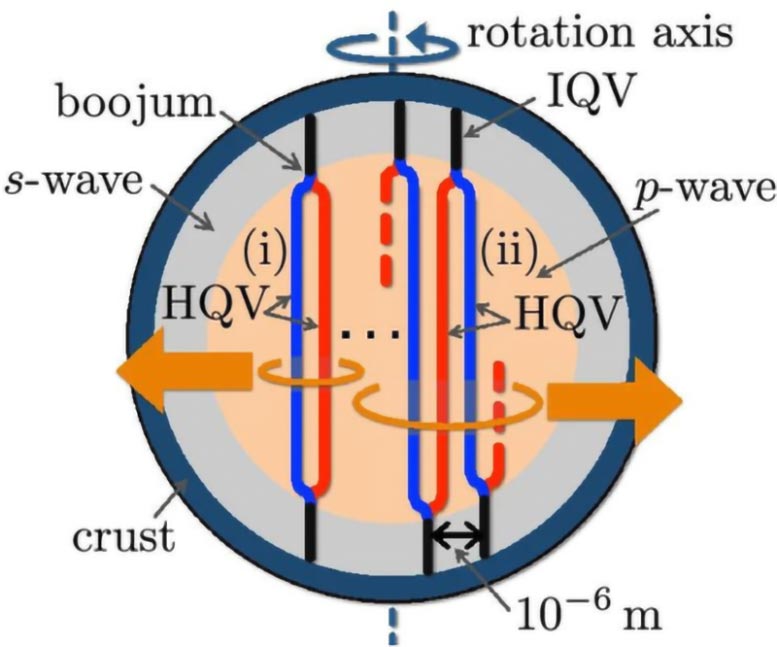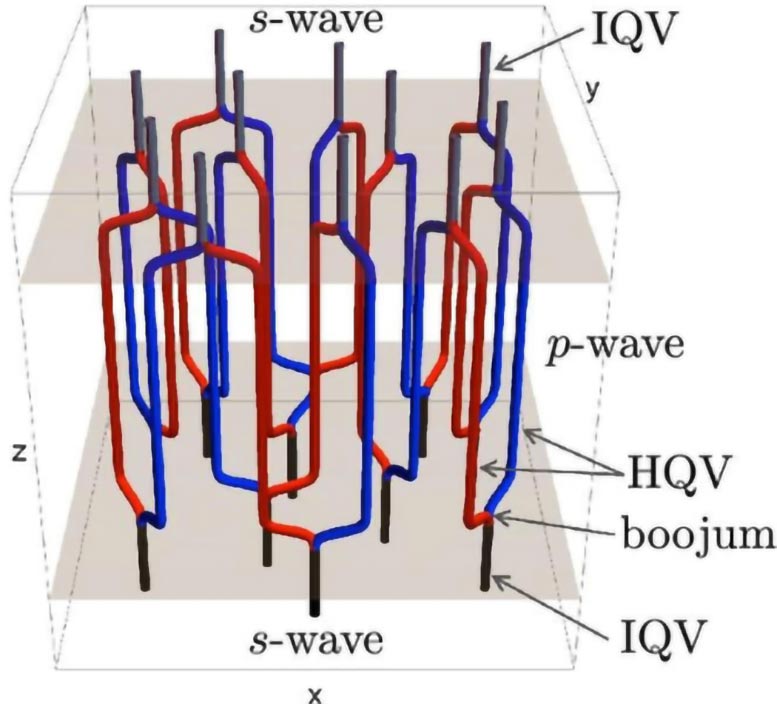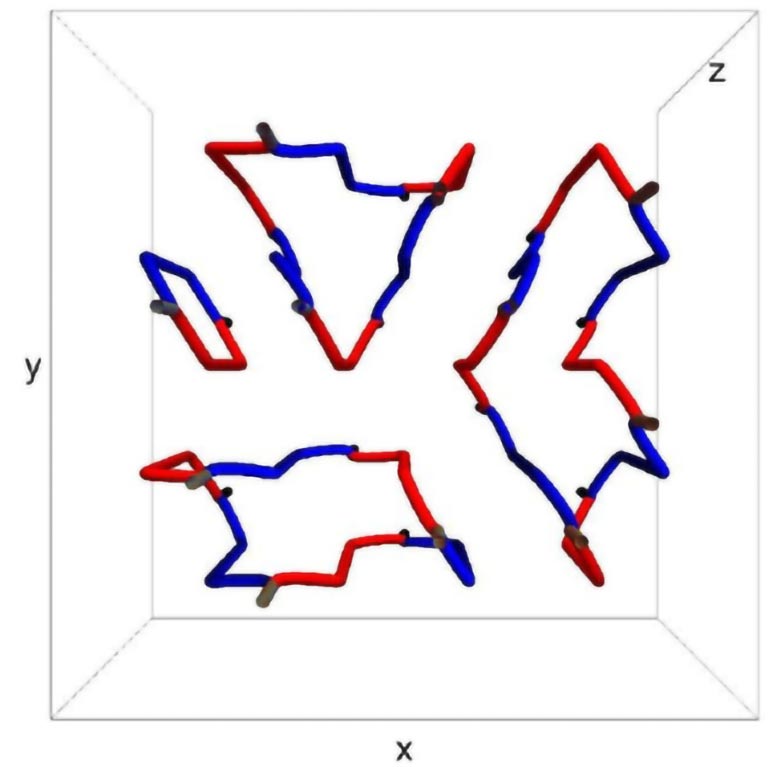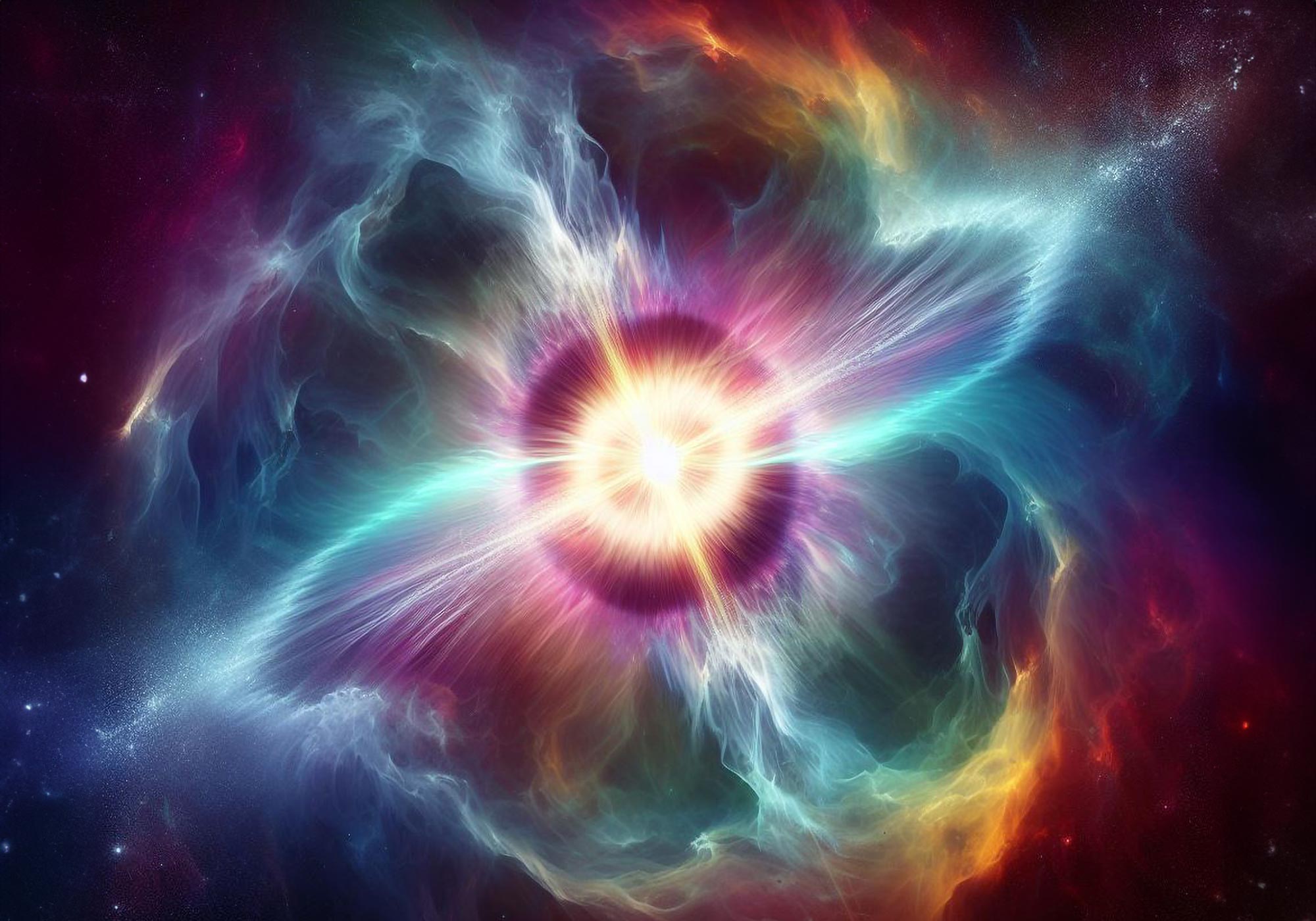Researchers have linked the periodic pulses of neutron stars to internal glitches influenced by superfluid vortices, with a new model suggesting these glitches follow a power-law pattern observed in various natural phenomena. Credit: SciTechDaily.com
A recent study has unveiled the origins of the mysterious “heartbeats” observed in neutron stars, relating them to glitches caused by the dynamics of superfluid vortices.
Researchers found that these glitches follow a power-law distribution similar to other complex systems and developed a model based on quantum vortex networks that aligns with observed data without extra tuning.
Discovering Neutron Stars’ Heartbeats
Stars blinking code in Netflix’s “3 Body Problem” might be science fiction. However, a new study deciphered neutron stars’ erratic flickers, revealing the twisted origin of these dead stars’ mysterious “heartbeats.”
When neutron stars—ultra-dense remnants of massive stars that exploded in supernovae—were first discovered in 1967, astronomers thought their strange periodic pulses could be signals from an alien civilization. Although we now know these “heartbeats” originate from radiation beams of stellar corpses, not extraterrestrial life, their precision makes them excellent cosmic clocks for studying astrophysical phenomena, such as the rotation speeds and internal dynamics of celestial bodies.
At times, however, their clockwork power law (also known as scaling law)—a mathematical relationship reflected in many complex systems from wealth inequality to frequency-magnitude patterns in earthquakes. Just as smaller earthquakes occur more frequently than larger ones, low-energy glitches are more common than high-energy ones in neutron stars.

The image shows the quantum vortex network model proposed by the study authors. The p-wave inner core (pink) surrounds the s-wave outer core (grey). Credit: Muneto Nitta and Shigehiro Yasui
Re-analyzing 533 up-to-date data sets from observations of rapidly spinning neutron stars, called pulsars, a team of physicists found that their proposed quantum vortex network naturally aligns with calculations on the power law behavior of glitch energies without needing extra tuning, unlike past models. Their findings are published in the journal 
3D configuration of the quantum vortex network. Credit: Muneto Nitta and Shigehiro Yasui
Previous studies have proposed two main theories to explain these glitches: starquakes and superfluid vortex avalanches. While starquakes, which behave like earthquakes, might explain the observed power law pattern, they could not account for all types of glitches. Superfluid vortices are the widely invoked explanation.
“In the standard scenario, researchers consider that avalanche of unpinned vortices could explain the origin of glitches,” Nitta said.
However, there has been no consensus on what might trigger vortices to avalanche catastrophically.
Key Insights Into Neutron Star Dynamics
“If there would be no pinning, it means the superfluid releases vortices one by one, allowing for a smooth adjustment in rotation speed. There would be no avalanches and no glitches,” Nitta said.
“But in our case, we didn’t need any mechanism of pinning or additional parameters. We only needed to consider the structure of p-wave and s-wave superfluids. In this structure, all vortices are connected to each other in each cluster, so they cannot be released one by one. Instead, the 
Top view of a quantum vortex network. Credit: Muneto Nitta and Shigehiro Yasui
While a neutron star’s superfluid core spins at a constant pace, its ordinary component lowers its rotation speed by releasing DOI: 10.1038/s41598-024-56383-w
Yasui and Nitta are also affiliated with Keio University’s Department of Physics and Research and Education Center for Natural Sciences. Another collaborator in the study is Giacomo Marmorini from the Department of Physics of both Nihon University and Aoyama Gakuin University.





















Discussion about this post